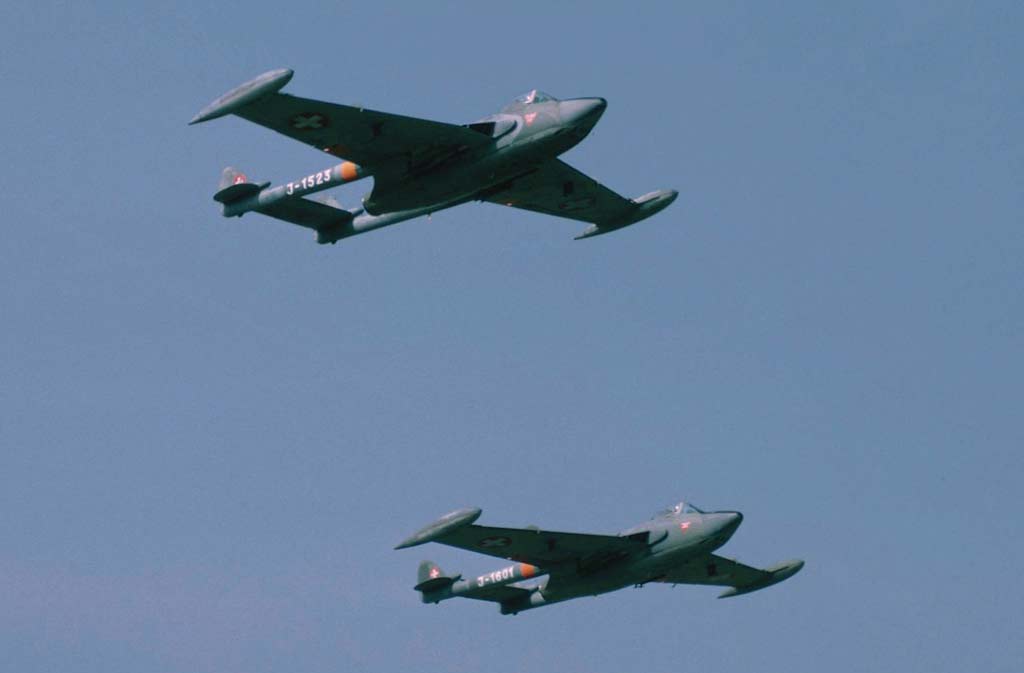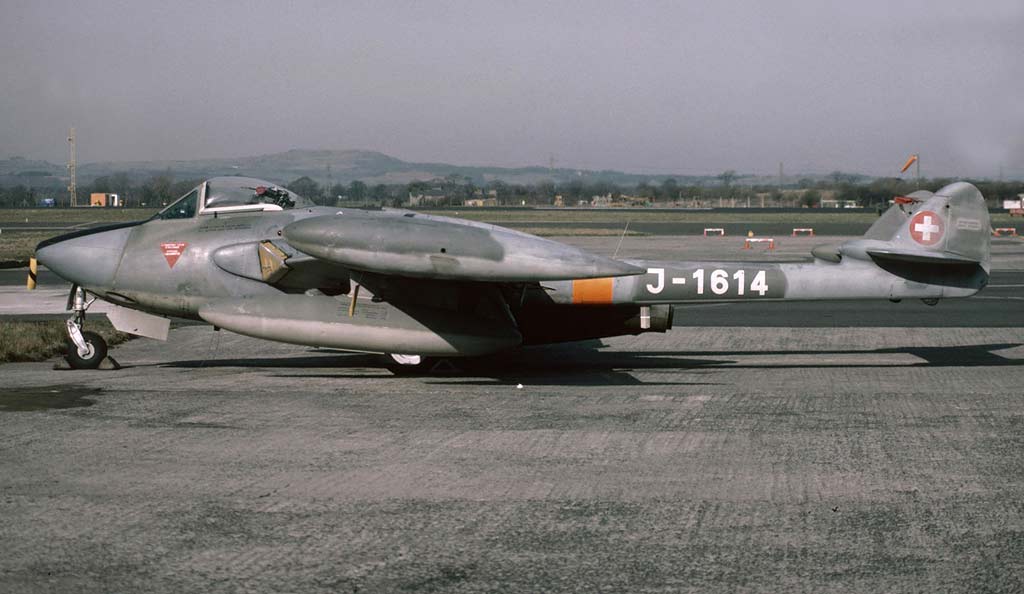The Sea Venom, a British twin-boom, jet-powered fighter-bomber, was notable for its carrier-based operations and all-weather capabilities.
In brief
The De Havilland Sea Venom was a pivotal aircraft in the evolution of naval aviation during the 1950s. Developed from the land-based Venom, it was one of the first jet fighters capable of operating from aircraft carriers. With its distinctive twin-boom design and Ghost turbojet engine, the Sea Venom played a crucial role in modernizing naval air forces, offering enhanced performance in all-weather conditions. Equipped for both air-to-air combat and ground attack, it was armed with cannons and could carry rockets and bombs. Despite its relatively short service life, the Sea Venom marked a significant transition from propeller-driven to jet-powered naval aviation, offering valuable insights into carrier-based jet operations.
The De Havilland Sea Venom represents a critical phase in the transition to jet-powered aircraft in naval warfare.

History of the Development of the De Havilland Sea Venom
The Sea Venom was developed in the late 1940s and early 1950s, a period marked by rapid advancements in military aviation technology. Post-World War II, there was a pressing need for modern, jet-powered aircraft capable of operating from aircraft carriers. The Royal Navy sought an aircraft that could fulfill multiple roles, including air-to-air combat and ground attack, in all weather conditions.
The development of the Sea Venom was undertaken by De Havilland, a company with a significant history in aviation innovation. Based on the successful Venom NF.2 night fighter, the Sea Venom featured modifications for carrier operations, including an arrestor hook and strengthened undercarriage. The first prototype flew on April 19, 1951.
The Sea Venom did not have a specific NATO nickname, as it was primarily operated by the British Royal Navy and was not as widely exported as some contemporaries.
Design of the De Havilland Sea Venom
The Sea Venom’s design was characterized by its distinctive twin-boom layout and tricycle landing gear. It was powered by a De Havilland Ghost 103 turbojet engine, producing 4,850 pounds of thrust. The aircraft measured 37.9 feet (11.6 meters) in length with a wingspan of 41.8 feet (12.7 meters).
Key design features included folding wings for carrier storage, an ejector seat for pilot safety, and an all-weather radar system in the nose. However, the Sea Venom had its drawbacks, including limited range and payload capacity compared to larger, land-based fighters. Despite these limitations, its design allowed for effective operation from the confined space of an aircraft carrier.
Performance of the De Havilland Sea Venom
The Sea Venom’s performance was noteworthy for its time. It could reach a top speed of 575 mph (925 km/h) and had a service ceiling of 38,000 feet (11,582 meters). Its range was approximately 705 miles (1,135 kilometers).
Compared to other naval jets like the American McDonnell Douglas F3H Demon, the Sea Venom had less powerful thrust but offered better maneuverability and lower landing speeds, vital for carrier operations. Its all-weather radar and navigational aids gave it an edge in versatility, particularly for night and adverse weather missions.

Military Use and Combat of the De Havilland Sea Venom
The Sea Venom saw significant military use with the Royal Navy and was exported to several other countries, including Australia and France. It was equipped with four 20 mm Hispano Mk.V cannons and could carry a variety of air-to-ground ordnance, including rockets and bombs.
The aircraft participated in several conflicts, most notably during the Suez Crisis in 1956. In this conflict, Sea Venoms conducted ground-attack missions, demonstrating their capability in a combat environment. The aircraft also played roles in colonial policing actions and as part of NATO forces during the Cold War.
Competing aircraft during its operational period included the American Grumman F9F Panther and the French Dassault Étendard. The Sea Venom was eventually phased out of service in the 1960s, replaced by more advanced models like the De Havilland Sea Vixen, which offered greater speed, range, and payload capacity.
The De Havilland Sea Venom stands as a significant milestone in naval aviation history. Its introduction into service marked a period of transition and experimentation, leading to the development of more advanced jet-powered carrier aircraft. Although it had limitations, the Sea Venom’s contributions to naval warfare and its role in several historical conflicts underscore its importance in the evolution of military aviation technology.
Back to the Fighter Jet section.